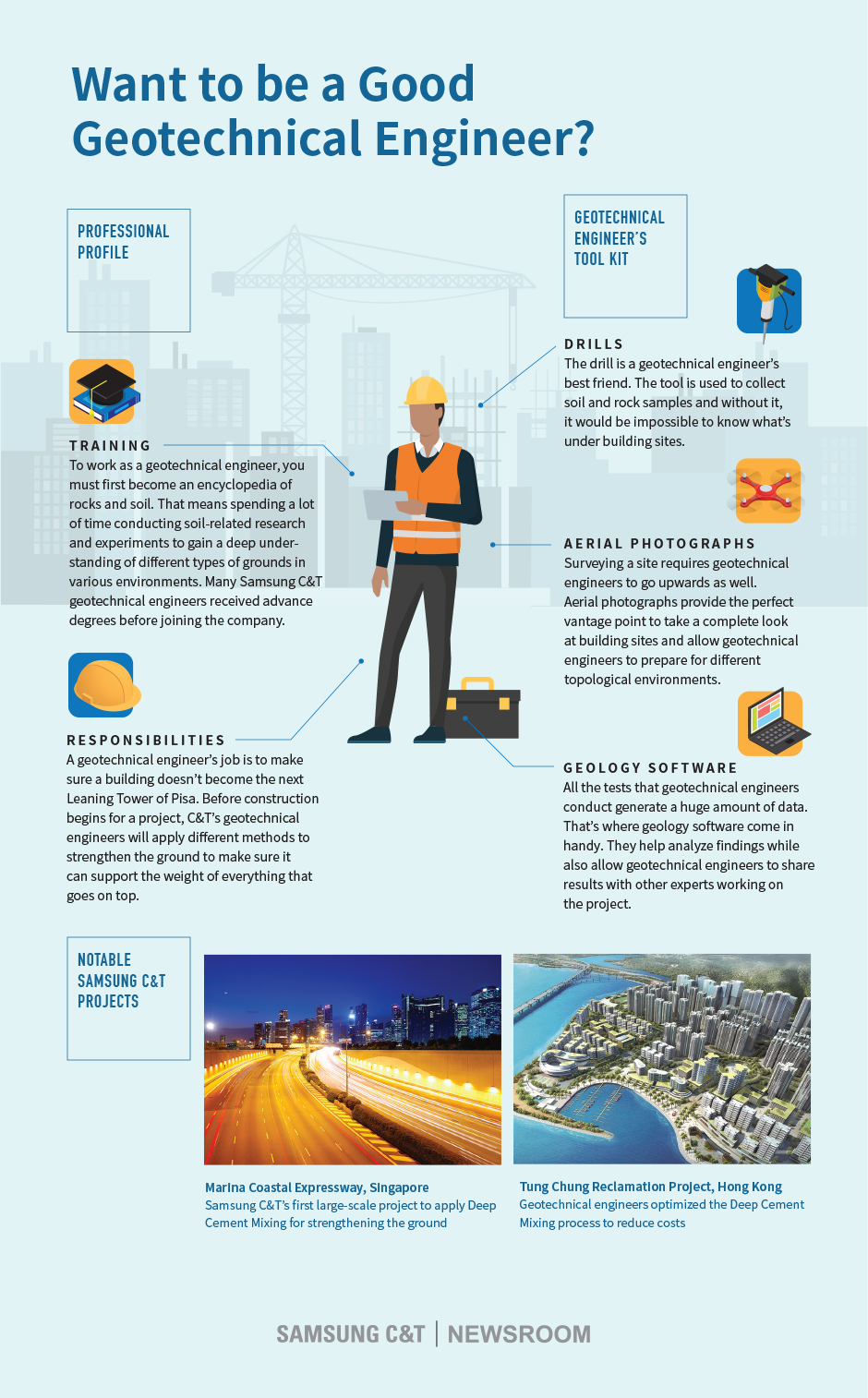Some Known Details About Geotheta
Some Known Details About Geotheta
Blog Article
Some Known Details About Geotheta
Table of ContentsExcitement About GeothetaA Biased View of GeothetaWhat Does Geotheta Do?The Best Strategy To Use For Geotheta
They work together with civil designers, structural designers, architects, and other specialists to incorporate geotechnical factors to consider right into the overall project style and construction process. This requires effective teamwork, control, and communication to guarantee that the geotechnical facets align with the job purposes and meet regulative demands.Mining & Materials Engineering: Concepts of boring, penetration rates, and variables influencing the option of exploration method. Attributes of nitroglycerins, shooting systems and blast patterns. Blowing up techniques in surface area and underground workings. Unique blowing up techniques at excavation perimeters. Resonance and sound control. Mechanical and continual methods to fragmentation, consisting of longwall shearing and fullface boring.
Modelling of fragment and particle size circulations; comminution as a transfer feature. Comminution innovation: squashing, grinding, size category. Integrated analysis of fragmentation and comminution procedures. Provided by: Mining & Materials Design.
7 Simple Techniques For Geotheta
Bachelor's level programs in civil, geotechnical, geological, and environmental design generally last 4 years and consist of basic education and learning courses in English, social scientific research, and the liberal arts, along with courses in sophisticated maths, architectural geology, and fluid mineralogy. (https://www.cheaperseeker.com/u/geotheta)
Geotechnical design includes the evaluation of the dirt and rock conditions at a specific website, and their ramifications for the development of that site. As a lot of frameworks rely upon the ground for support, it lacks shock that a thorough understanding of the ground problems, and the viability of foundation systems, are crucial to the long-term security and performance of the building or structure.
Specialising in the investigation of geological developments and ground practices, geotechnical engineers execute clinical investigations and screening to understand the influence these geological formations may carry the style and building and construction of building, civil and framework tasks. This experience is critical for the style and building and construction of buildings, roads, passages, dams, bridges, and water and sewage systems.
The geotechnical team at Douglas Partners consistently consult with engineers, style engineers, programmers, and builders to make referrals on style and growth proposals to guarantee that the developed structures are suitably created for the ground conditions. The design of footing systems needs to take into consideration the weight of the framework, the ability of the ground to support that weight together with motion tolerances and efficient building and construction.
Fascination About Geotheta
This task is greatly streamlined by the usage of our Douglas Map geospatial system that makes this information readily obtainable in a very easy to utilize internet internet browser interface. A geotechnical designer will direct the exploration of boreholes and test pits to accumulate soil and various other samples, and also analyze surface area attributes and ground exposures to form a geotechnical version of the subsurface problems.
Relying on the job kind and ground problems experienced, laboratory screening might to name a few things analyze toughness, compressibility, reactivity and/or leaks in the structure of dirt and rock samples. After this data is gathered and collected, the results are made use of for a geotechnical model of the site, which is generally provided as sections across the website.

A geotechnical examination naturally can only analyze the ground conditions at the locations pierced or excavated. All-natural variations in dirt and rock problems can occur across a site and between examination places. It is therefore good technique that the geotechnical designer be retained throughout building of the project to offer on-site confirmation that the ground problems experienced follow the expectations and suggestions given in the geotechnical investigation record.
The Ultimate Guide To Geotheta
Geotechnical designers utilize their in-depth knowledge of dirt and rock to assess risk and solve problems on diverse framework projectsGeotechnical design is a specialist branch of civil engineering which looks at the behaviour of earth materials and the application of soil and rock mechanics. Engineer of Record. As a geotechnical designer, you will certainly assess the physical, mechanical and chemical homes of soil and rock in order to design structures, preserving frameworks and earthworks
Geotechnical engineering is carefully connected to and overlaps with, both engineering geology and ground design - https://geotheta.jimdosite.com/. It's feasible to specialise in geotechnics or work for a geotechnical firm but be referred to as an engineering geologist or a ground engineer. As a geotechnical designer, you'll require to: develop and preserve partnerships with clients and other professionals associated with the website, throughout each projectmaintain safety criteria on site bear in mind cost ramifications when you make recommendationsstudy geological maps and airborne photos from an array of resources and from different time periodsexamine building prepares to see just how practical they are based on your understanding of the siteinvestigate dangers or geological hazards for the sitesearch for ecologically sensitive functions, such as landfill begin to develop accurate and interpretive ground modelsplan area investigationsdrill and analyse samples of bedrock, dirt, groundwater and extra products supervise various other specialists on sitesolve technological issues as they emerge, such as unanticipated structures at drill sitesmonitor problems during and after building to ensure frameworks are stable in the brief and lengthy termadding information gathered on site to your initial researchcreating geotechnical computations, drawings, and 2 or three-dimensional computer designs interpreting the datamaking suggestions about the recommended usage of the site

Report this page